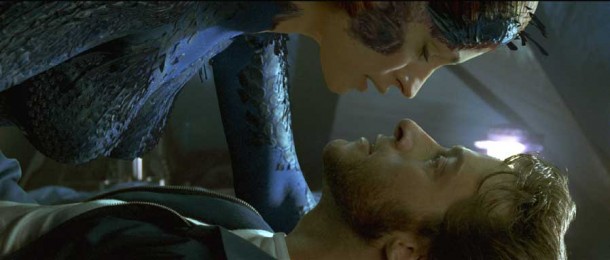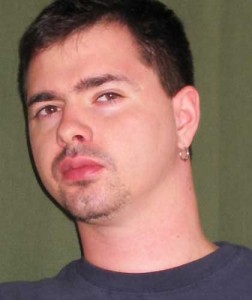Interview with Erik Paynter VFX artist, Kleiser-Walczak

CGC: What is your company position at Kleiser-Walczak?
EP: Basically a jack of all trades. I tend to do a little of everything, wherever needed, sometimes involving new technology.
CGC: What part did you play in the making of X2?
EP: My main tasks on X2 were mystique hair (including her morph target hair), and camera tracking shots involving our cg mystique. I also did various technical tasks and some character setup.
CGC: Can you tell us about the process of making hair for mystique?
EP: We used Joe Alters “Shave and a Haircut” for Maya. The first step of course involved styling, and getting it to match her realhair as closely as possible, then setting up the shading, highlights, etc. Then setting up the dynamic properties if needed, and in certain shots, developing a way to morph from one hair style to another.
CGC: Were there any pitfalls in this process?
EP: Well, We started using “Shave” in beta, in our early tests and R&D phase. So a lot of my job at first was hunting out bugs. Applying new software to a production pipeline isn’t the easiest thing to deal with, especially when you’re starting off in beta, but Joe Alter and his crew were very helpful with resolving issues and even adding features. Another issue involved figuring out a way to transition from one style to another. In some cases this was as simple as animating color and growing one hairstyle while one shrank, and in some cases meant animating hair guides (using curves) and using dynamics to go from one style to another.
CGC: Please describe some of the scenes you tracked with Maya live.
EP: There is a shot where Mystique, incognito, walks behind a rippled glass divider and transforms back into her true form. We used a back plate which was filmed without the glass, tracked it, and added the glass back in as a cg element, refractions and all. Another shot was of Mystique sliding along the floor, and involved removing a sliding surface she was laying on. A clean plate was filmed, however it wasn’t shot with a motion controlled camera, so the plates didn’t match. Therefore, the easiest way to do it involved me tracking the shot, rotoing out the floor (which was done by Mary Nelson and Svetla Belcheva) , and adding a cg floor element beneath. My personal favorite shot was the bathroom scene, which was the first shot we tackled. It had a dramatic camera move as well as a close up of the cg hair. I probably spent as much time on that shot as I did on all the others combined.
 CGC: What preparation was required on your behalf for these shots?
CGC: What preparation was required on your behalf for these shots?
EP: First we determined which back plate would track best. Most back plates had multiple passes, shot with a motion controlled camera, so usually I was able to track a clean plate, and in a couple cases, a plate with track points setup, such as x marks done with tape.
However, even with a motion controlled camera, the plate didn’t always match exactly with the production plate. In this case I’d either manually adjust the tracked camera (usually something minor such as slight overall rotation or translation) or our compositor, Ed Mendez, would fix in Shake.
CGC: Thanks for your time…
Related links:
